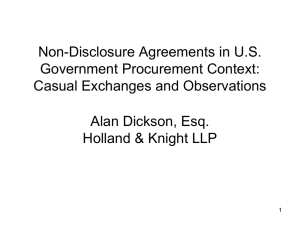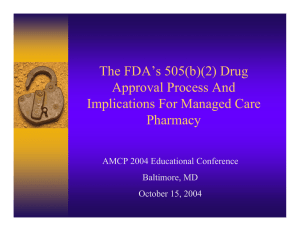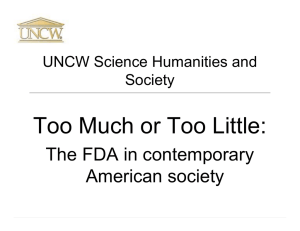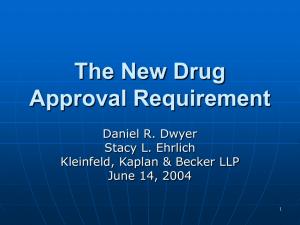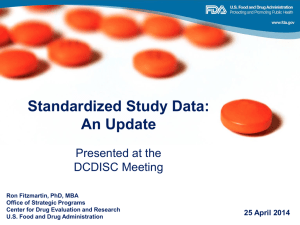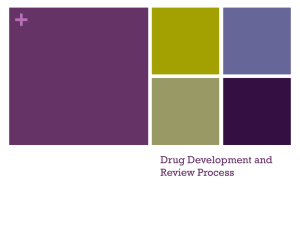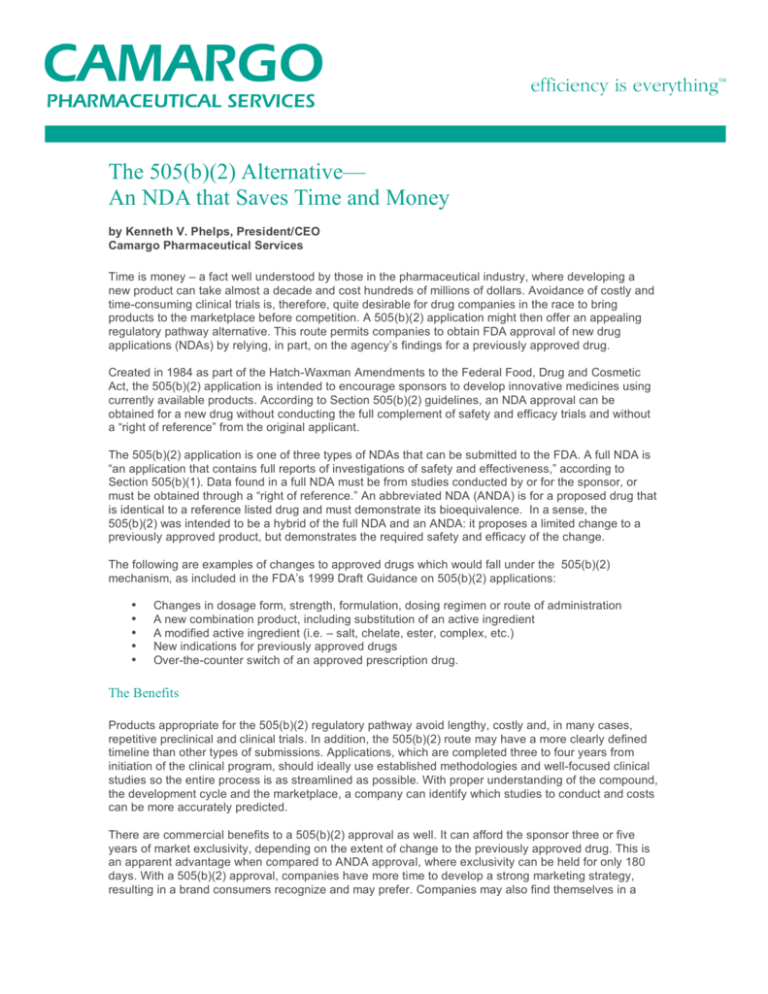
The 505(b)(2) Alternative—
An NDA that Saves Time and Money
by Kenneth V. Phelps, President/CEO
Camargo Pharmaceutical Services
Time is money – a fact well understood by those in the pharmaceutical industry, where developing a
new product can take almost a decade and cost hundreds of millions of dollars. Avoidance of costly and
time-consuming clinical trials is, therefore, quite desirable for drug companies in the race to bring
products to the marketplace before competition. A 505(b)(2) application might then offer an appealing
regulatory pathway alternative. This route permits companies to obtain FDA approval of new drug
applications (NDAs) by relying, in part, on the agency’s findings for a previously approved drug.
Created in 1984 as part of the Hatch-Waxman Amendments to the Federal Food, Drug and Cosmetic
Act, the 505(b)(2) application is intended to encourage sponsors to develop innovative medicines using
currently available products. According to Section 505(b)(2) guidelines, an NDA approval can be
obtained for a new drug without conducting the full complement of safety and efficacy trials and without
a “right of reference” from the original applicant.
The 505(b)(2) application is one of three types of NDAs that can be submitted to the FDA. A full NDA is
“an application that contains full reports of investigations of safety and effectiveness,” according to
Section 505(b)(1). Data found in a full NDA must be from studies conducted by or for the sponsor, or
must be obtained through a “right of reference.” An abbreviated NDA (ANDA) is for a proposed drug that
is identical to a reference listed drug and must demonstrate its bioequivalence. In a sense, the
505(b)(2) was intended to be a hybrid of the full NDA and an ANDA: it proposes a limited change to a
previously approved product, but demonstrates the required safety and efficacy of the change.
The following are examples of changes to approved drugs which would fall under the 505(b)(2)
mechanism, as included in the FDA’s 1999 Draft Guidance on 505(b)(2) applications:
•
•
•
•
•
Changes in dosage form, strength, formulation, dosing regimen or route of administration
A new combination product, including substitution of an active ingredient
A modified active ingredient (i.e. – salt, chelate, ester, complex, etc.)
New indications for previously approved drugs
Over-the-counter switch of an approved prescription drug.
The Benefits
Products appropriate for the 505(b)(2) regulatory pathway avoid lengthy, costly and, in many cases,
repetitive preclinical and clinical trials. In addition, the 505(b)(2) route may have a more clearly defined
timeline than other types of submissions. Applications, which are completed three to four years from
initiation of the clinical program, should ideally use established methodologies and well-focused clinical
studies so the entire process is as streamlined as possible. With proper understanding of the compound,
the development cycle and the marketplace, a company can identify which studies to conduct and costs
can be more accurately predicted.
There are commercial benefits to a 505(b)(2) approval as well. It can afford the sponsor three or five
years of market exclusivity, depending on the extent of change to the previously approved drug. This is
an apparent advantage when compared to ANDA approval, where exclusivity can be held for only 180
days. With a 505(b)(2) approval, companies have more time to develop a strong marketing strategy,
resulting in a brand consumers recognize and may prefer. Companies may also find themselves in a
potentially wide-open market with a unique 505(b)(2) approved drug, thus allowing for greater flexibility
in pricing.
The Challenges
However, the 505(b)(2) application process is not without its challenges. The most significant of these for both the FDA and the applicant - is to determine what additional information is needed to support the
proposed change of the previously approved drug. Be aware: The most common 505(b)(2) application
flaw is the lack of appropriate data. As noted in 21 CFR 314.54, the “application need contain only that
information needed to support the proposed modification(s) of the listed drug.” Input from experts, along
with early discussions with the FDA will be helpful in understanding what data is necessary and
adequate. According to guidelines, before filing an application, a sponsor should submit a plan to the
appropriate division of the Center for Drug Evaluation and Research (CDER). This plan will identify the
types of studies that should be conducted, and highlight parts of the proposed product that rely on the
FDA’s finding for the previously approved drug. As with any other type of submission, the completeness
and accuracy of the application must be of the highest quality for approval on the first cycle review.
The Future of the 505(b)(2)
The 505(b)(2) strategy has been underutilized in the 16 years since it was legislated. One reason might
be the recent controversy over its constitutionality, as Pfizer and other large pharmaceutical companies
have petitioned against approvals of 505(b)(2) NDAs. They argue that it is unconstitutional for the FDA
to rely on the innovator’s proprietary data and that this application violates Fifth Amendment rights. No
court decision has yet been rendered on the constitutionality, but in October, the FDA released a
statement reaffirming their interpretation of Section 505(b)(2) and rejecting many petitioners’ complaints.
While petitioners have drawn attention to the ability of a 505(b)(2) to utilize findings contained in already
approved NDAs, they overshadow an abundant source: published studies. Experts have made it a
priority to exhaust available public documents when assembling a 505(b)(2) applications, eliminating or
decreasing the need for studies included in previously approved NDAs.
A more longstanding reason for the underutilization of the 505(b)(2) process might be a past low market
demand for drugs that would qualify for this route of approval. This climate, however, seems to be
changing. Among other approaches for improving quality of life, today’s healthcare providers are looking
for routes of administration that produce less side effects due to systemic absorption of drugs. For
example, sustained release techniques and oral to transdermal modification are typical drug changes
that have fallen under the 505(b)(2) strategy. These alterations have improved profiles of previously
approved drugs, reducing risks, increasing the consistency and effectiveness of the drug and enhancing
compliance. In addition, more companies with proprietary drug delivery technologies are entering the
market. Based on these and other prevailing factors in the pharmaceutical industry, perhaps the time for
the 505(b)(2) NDA to be better utilized has come.
This article first appeared in the March, 2005 issue of DIA Forum.
©2005 Drug Information Association All rights reserved.
Camargo Pharmaceutical Services • 9825 Kenwood Road Suite 102 • Cincinnati OH 45242
513.561.3329 • toll-free 888-451-5708 • fax 513.561.3367 • www.camargopharma.com

